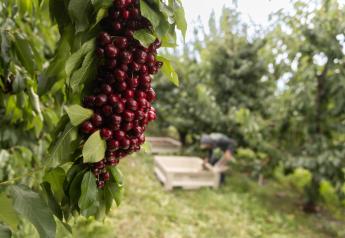Fresh produce sales remain elevated in first week of May

Highlights
- Fresh produce sales didn't see as large a year-over-year increase for the week ending May 3 as they did the previous week, but both fruits and vegetables saw double-digit gains.
- Fresh food spending as part of online grocery orders is on the rise as retailers now have more capacity to accommodate shoppers wanting to use those options than they did at the start of the coronavirus crisis.
- Are shoppers buying more packaged produce because of coronavirus concerns, or do the items they're buying more just happen to lend themselves to packaging? PMA's Joe Watson recommends how retailers should proceed.
Fresh produce dollar sales have remained above 2019 levels for 10 straight weeks due to the coronavirus pandemic.
The most recent available numbers, for the week ending May 3, showed that sales were up 17.2% compared to the same week last year, according to IRI. As has been the case throughout the coronavirus crisis, fresh vegetables overall continue to see higher growth than fresh fruit. For the week ending May 3, vegetables were up 24% and fruit 11.1%.
“I am very encouraged with the early May fresh produce performance going into the summer months,” Joe Watson, vice president of membership and engagement for the Produce Marketing Association, said in a news release. “As an industry we are working hard to keep the supply moving, putting employee safety and food safety front and center, and consumers are rewarding our efforts with their dollars.
“Additionally, foodservice trucks loaded with fresh produce hitting the roads once more was a very welcome sight this week, and I am confident we will see strengthened overall produce demand in weeks to come,” Watson said.
Anne-Marie Roerink, principal of 210 Analytics, also expected that elevated produce sales would continue, especially as people made additional trips to stores based on widespread media coverage of meat shortages. Once those shoppers are in the stores, they are likely to buy other items in addition to meat — especially produce.
E-commerce
Jonna Parker, team lead for fresh for IRI, noted that fresh food spending as part of online grocery orders has also seen sustained growth. Since the week of March 15, increases in fresh sales online compared with 2019 have ranged from 68% to 105%, according to IRI.
“The gains in fresh foods e-commerce are accelerating, driven by two factors,” Parker said in the release. “First, many retailers and third-party grocery delivery companies had to very quickly ramp up their online capacity, which resulted in great pressure on slot availability early on during the pandemic.
“Second, there are many shoppers who ordered online for the first time as a result of the pandemic,” Parker said. “They may have started off with smaller baskets and avoided fresh. But as their comfort with online ordering grows, it is very likely we will see order frequency, basket size and inclusion of fresh items grow along with it.”
She also mentioned that comments on consumer surveys continue to indicate hesitation by some shoppers about buying fresh produce given food safety concerns, even though federal health agencies have repeatedly told the public that there is no evidence COVID-19 can be transmitted through food.
Packaged versus bulk
Another shift that could be an indicator of those fears is growing share of packaged produce. Per IRI, the share of produce sales that come from fixed-weight produce was 47.1% for the 52 weeks ending late January, and during the pandemic, that share has increased to 51.2%.
“We have to be a little cautious to draw big conclusions from this,” Watson said in the release. “On the one hand, some retailers are creating grab-and-go produce bags in-store that would still ring up as random weight. On the other, there is the chicken-and-egg discussion. Is the share of packaged up because of what items people gravitated towards during the pandemic, or did they buy those items because they were bagged?
“For instance, big pandemic winners have been berries, potatoes, onions and oranges, (which) all tend to have a high likelihood of being packaged,” Watson said. “It is best to rely on your in-store observations and listen to the consumer to understand their packaging wants.”







